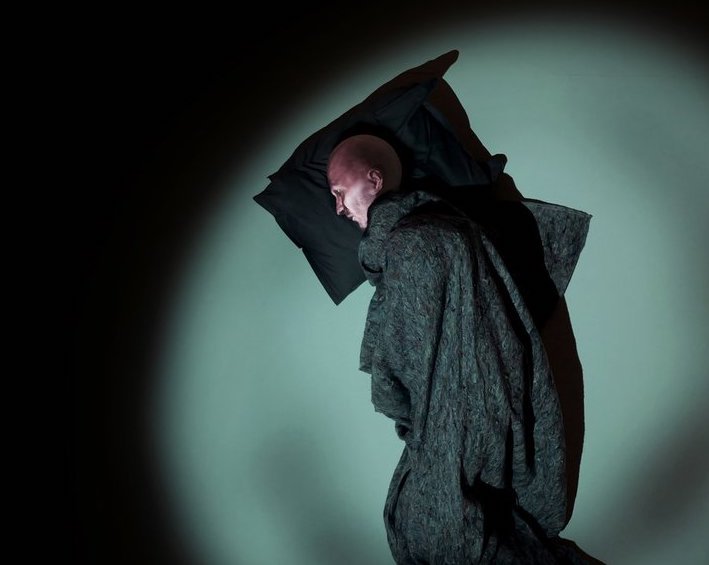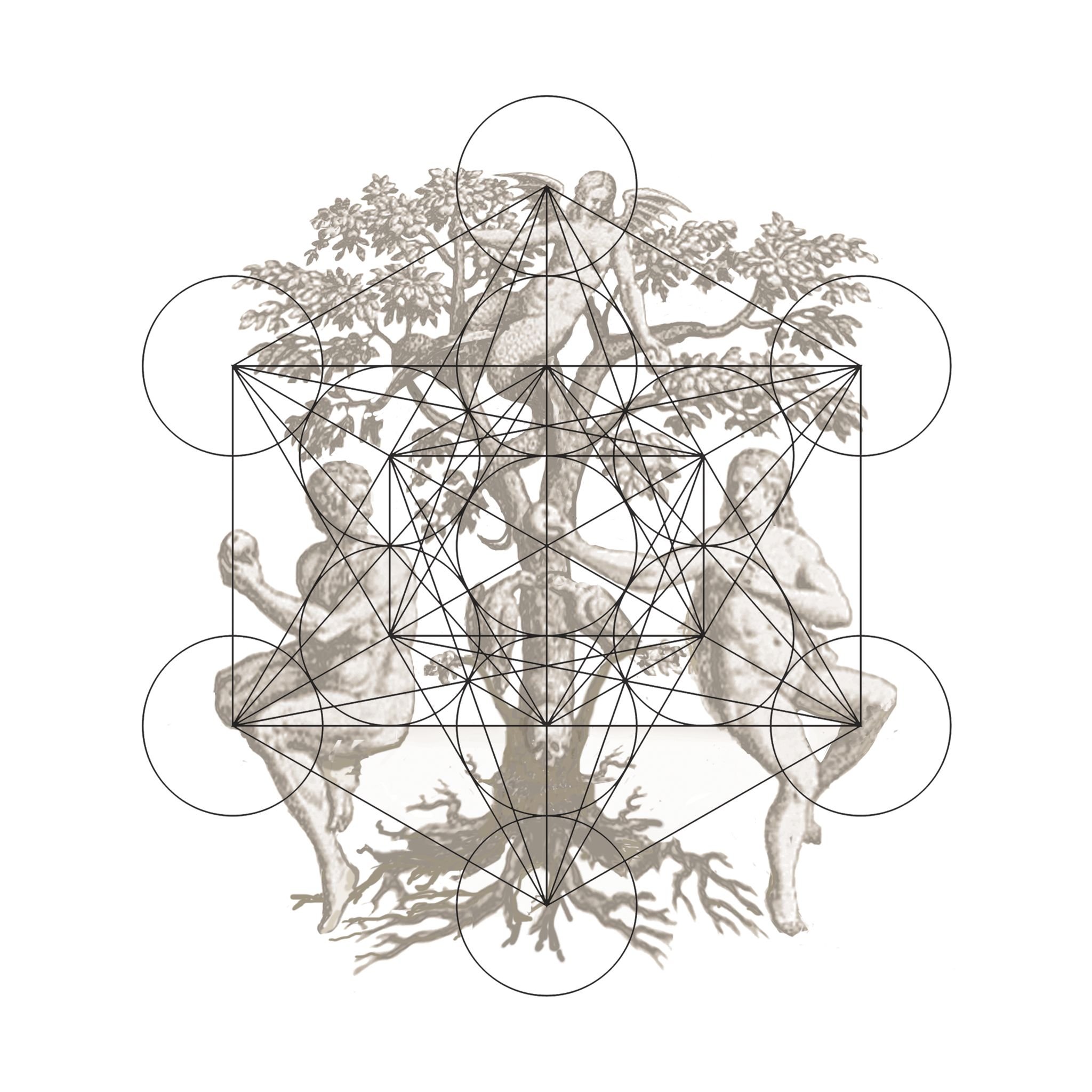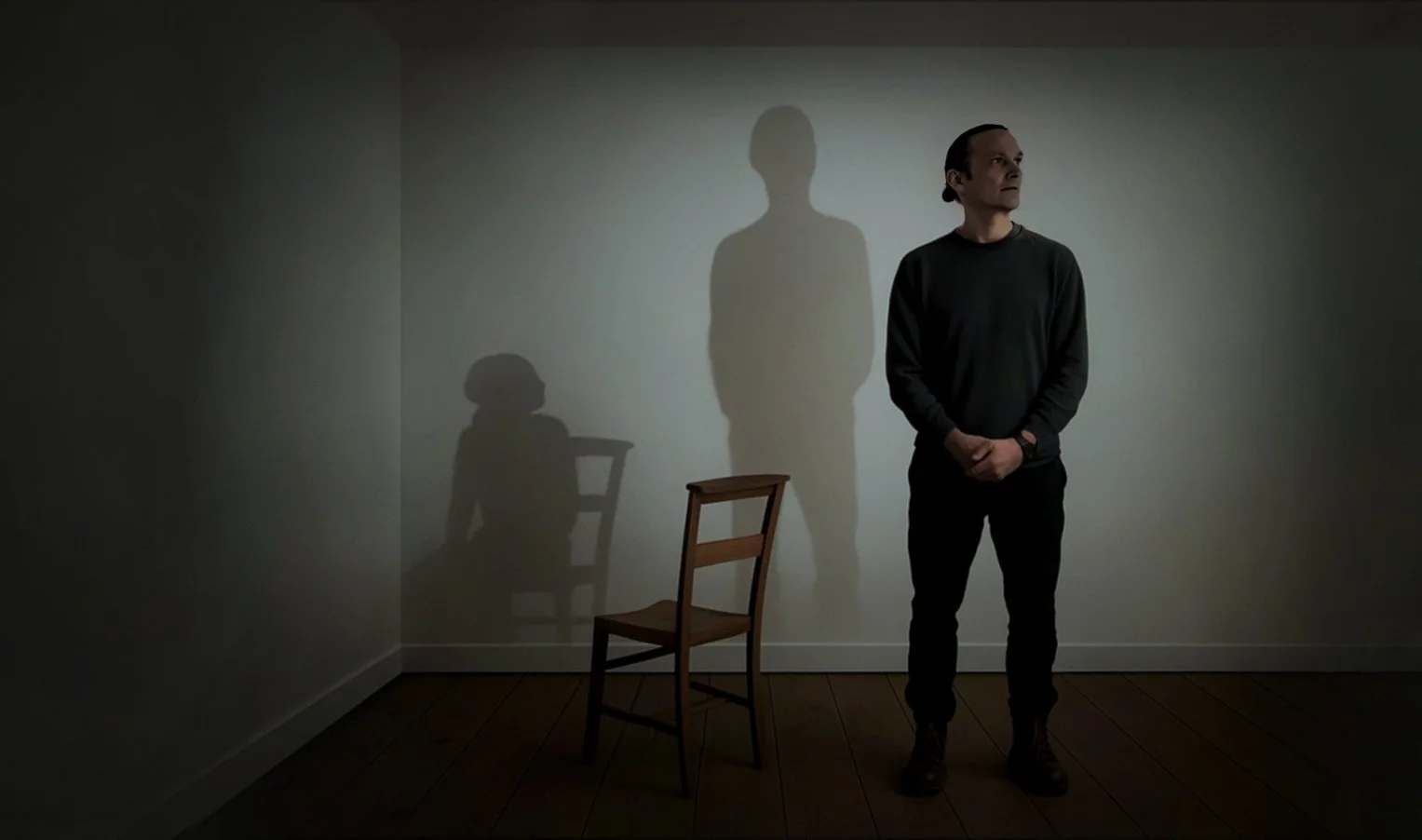
EXHIBITION DATES : In person and online from 23/5 – 12/7
INTRODUCTION :
Soon after that invasion began, Jarno was invited to participate in a museum exhibition in his native Finland, a country in the uncomfortable position of bordering with Russia. Given the rising unease and alarm at the unfolding situation, it was only natural that he would feel compelled to respond. The result — a sculptural/projection installation piece titled ‘Lepo' — which now gives this exhibition its name and features in our show....”
Read more/less
‘Lepo’ literally translates as ‘rest', but in a Finnish military parlance and context it carries a more charged meaning — something closer to “at ease”. It suggests a state of temporary relief, but one held with vigilance. A pause in tension, whilst remaining alert to the threat at hand.
The work presents a life-size figure suspended on a wall in a darkened space, spot lit and in isolation. The body is static, curled in foetal position, wrapped in a grey utility blanket — forming an inadequate shield. The frozen face glows luminous retaining a blank expression, yet closed eyes twitch suggesting a state of alertness and perhaps also shock as counter-point to the stillness. Perhaps we might recognise this figure as a soldier, in a moment of solitude. But it could just as easily be someone sleeping rough on the city street, in a bedsit, a refugee, someone in hospital, or asylum, or indeed any one of us locked in a prison of thought and feeling. The image resists a singular reading and becomes a vessel for many.
What the philosopher Emmanuel Levinas called “the face of the other” is present here — the ethical demand that arises when we encounter a vulnerable body, not as an idea, but as a real being who suffers. Yet the work makes that encounter complex. We are close to the figure, but unable to help. Even the perspective feels off — we seem to be looking down at it, or floating above it. The experience is intimate, but distant. We are drawn into the space, but we can’t touch it. We witness, but we can not intervene.
The second work, 'Her Chair', occupies the larger gallery space, even though it contains only a single object: a plain wooden chair, left quietly abandoned in the corner of the room. A spotlight illuminates it, casting our shadow alongside. Then, we notice on the wall, the shadow in motion, of a girl sitting in the chair that we know to be empty. The figures soft breathing emanates from her space — an existential memory, making us question the palpable weight of presence and absence.
This is where the two works connect: both are concerned with what lingers. With what is left behind when a moment departs. Philosopher Jacques Derrida wrote "the idea that we are shaped not only by what is here, but by what is no longer here. That absence can carry as much weight as presence.” As viewers, we’re cast in an awkward role. Not participants, not actors — just witnesses. We can’t change the scene. We can only feel it.
So perhaps that is the real power of this exhibition. In a world that so often overwhelms us with suffering that we cannot stop, perhaps feeling is what we are left with. And maybe that is not insignificant. Maybe empathy is not a solution, but a thread. Something that binds us in our shared uncertainty. Art, in this sense, becomes not a way of explaining the world — but of holding space within it. A reminder that, even in solitude, we are not entirely alone.
Joseph Clarke, 2025
“Our dead are never dead to us, until we have forgotten them.”
EXHIBITION INSTALL SHOTS:
BIOGRAPHY :
Jarno Vesala currently lives and works in Nokia, Finland graduating from the Tampere University in 2004. He was selected as the Finnish Young Artist of the Year in 2013 and in 2014 won the Turku Biennale Prize. Vesala multimedia installations have featured in numerous museum and high profile exhibitions at home and abroad with works held in Helsinki City Art Museum, Tampere Art Museum, The Finnish State Art Collection and the City of Nokia Art Collection. ‘Lepo’ is his fourth solo presentation at Anima Mundi. Vesala's emotive installations often incorporate a complex multitude of media resulting in deeply affecting environments which play with the act of perception, memory and illusion. These empathetically and physically immersive encounters are often perplexing, mysterious and unsettling. Recurrent humanistic themes relate to solitude and intimacy are made manifest and palpable through his unique rendering.






